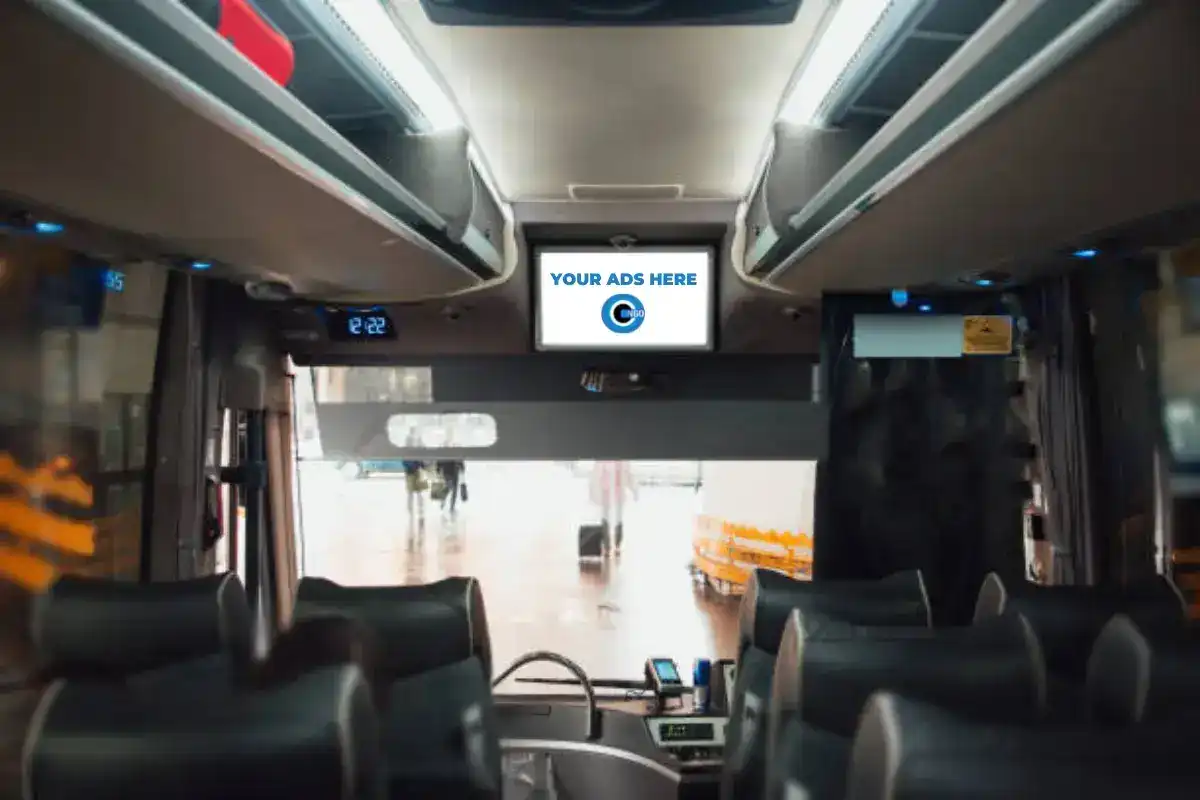Transit Advertising Philippines: A Cutting-edge Way to Market
Transit Advertising Philippines: A Cutting-edge Way to Market
Blog Article
Recognizing the Role of Transportation Marketing in Enhancing Brand Exposure and Consumer Interaction
Transit advertising has actually emerged as an essential aspect in the marketing landscape, providing one-of-a-kind opportunities for brand names to raise their exposure and engage consumers effectively. With the capability to reach a restricted and diverse audience throughout their everyday commutes, these marketing techniques are not just about visibility; they have to do with producing significant connections with possible consumers. As we discover the multifaceted advantages and ingenious methods within transportation advertising, it ends up being vital to think about exactly how these aspects jointly influence customer understanding and habits, questioning concerning their long-lasting influence on brand commitment.
Meaning of Transit Marketing
Transit advertising describes the practice of advertising items, services, or brands through promotions put around public transportation systems. This kind of advertising and marketing incorporates a selection of positionings, including posters on trains and buses, electronic screens at transit stations, and wraps on the exterior of automobiles. It aims to get to a varied target market, maximizing the high foot website traffic connected with public transportation.
Transportation advertising is tactically positioned to capture the focus of travelers, who usually spend considerable time taking a trip or waiting. By incorporating ads right into the daily regimens of people, brand names can create a long lasting impact and foster brand name acknowledgment. The medium is specifically effective in city settings, where mass transit is a key mode of traveling.
In addition, transit advertising can promote localized targeting, permitting companies to reach specific demographics based upon transit courses and terminal areas. As metropolitan populaces expand and the use of public transport boosts, this marketing method has gotten importance as an essential component of integrated advertising and marketing strategies. The vibrant nature of transportation marketing, combined with its capability to involve consumers in a restricted atmosphere, emphasizes its significance in modern advertising practices.
Benefits of Transportation Advertising And Marketing
The efficiency of transit advertising hinges on its capability to supply a wide range of benefits to brands looking for to boost presence and engagement. Among the primary benefits is the extensive reach it uses; transit ads can efficiently target varied demographics across city locations, getting to both pedestrians and travelers alike. This broad exposure significantly boosts brand awareness.
One more advantage is the high regularity of impacts. As transit lorries travel along well-known courses and stop at numerous areas, they develop repetitive exposure that reinforces brand messages. This frequency fosters experience, which is vital in customer decision-making.
Transportation advertising is likewise economical contrasted to various other media systems. Provided its extensive reach and potential for high impressions, brand names usually experience a reduced price per thousand perceptions (CPM), maximizing their advertising and marketing budget plan.
Moreover, transit advertisements can create a sense of area connection. By lining up with regional transportation systems, brand names can resonate with local audiences and foster a feeling of local pride. This localized method improves brand loyalty and involvement, making transportation marketing an engaging option for businesses intending to strengthen their existence on the market.

Reliable Approaches for Transit Campaigns
To make best use of the effect of transportation campaigns, brand names ought to leverage strategic preparation and execution customized to their target audience. First, recognizing the market characteristics of the target market using public transit is crucial. This enables brands to develop tailored messaging that reverberates with potential consumers.
Following, choosing the ideal transit tools is essential. Whether utilizing bus wraps, train posters, or electronic screens, each tool has distinct benefits that can enhance presence. For example, dynamic visuals on bus wraps can bring in focus, while digital ads can be updated frequently to mirror timely promos.
Additionally, incorporating a cohesive branding approach across transit systems makes certain uniformity and reinforces the brand name's identification. Using appealing designs and unforgettable taglines will reinforce brand name recall among travelers.
By using these strategies, brands can efficiently harness the capacity of transit advertising and marketing, fostering greater awareness and link with their target audience. Inevitably, a well-executed transportation campaign can drive considerable development in brand exposure and customer interaction.

Determining Impact and Engagement
In examining the performance of transit marketing campaign, exact measurement of influence and involvement is crucial for brands seeking to optimize their marketing approaches. Metrics such as reach, frequency, and impacts supply fundamental information to examine presence. Assessing these variables aids determine the amount of possible clients are revealed to the promotions during their everyday commutes.
Interaction can be further determined through consumer communications, such as web site traffic, social media points out, and direct responses to calls-to-action featured in the ads. Utilizing tools like QR codes or one-of-a-kind Links can promote tracking of consumer actions straight connected to transportation projects. Surveys and feedback mechanisms also function as important methods to gather qualitative information on consumer perceptions and recall of the advertisement.
Furthermore, advanced analytics and attribution versions can correlate transportation direct exposure with subsequent purchasing behavior, offering insights into the return on investment. By using a comprehensive approach that integrates quantitative and qualitative procedures, brands can develop a nuanced understanding of their transit advertising impact. Ultimately, this data-driven technique enables brand names to fine-tune their campaigns, guaranteeing they resonate properly with other target market and enhance total brand presence.
Study of Successful Campaigns
Effective transit marketing projects act as engaging examples of exactly how reliable strategies can boost brand name exposure and involvement. Transit Advertising Philippines. One remarkable situation is the "I Love New york city" campaign, which transformed the city's photo and attracted countless travelers. By utilizing metro advertisements, signboards, and bus wraps, the campaign produced a strong, cohesive brand name identity, leading to a substantial uptick in tourism and regional business patronage
An additional excellent campaign is Coca-Cola's "Share a Coke" effort, which leveraged transportation advertising to personalize the brand name experience. By including preferred names on marketing materials throughout different transportation platforms, Coca-Cola cultivated a deeper psychological connection with customers, urging them to share their experiences on social media.
Additionally, the "Got Milk?" campaign properly utilized public transport advertisements to reach a broad audience, reinforcing the message of the importance of milk in a well balanced diet regimen. The project saw a quantifiable rise in milk consumption in target demographics.
These study show that when carried out thoughtfully, my latest blog post transit advertising and marketing can considerably enhance brand name exposure, foster customer engagement, and drive quantifiable outcomes, showing its crucial role in modern marketing approaches. - Transit Advertising Philippines
Conclusion
In final thought, transportation advertising and marketing serves as an important device for enhancing brand visibility and cultivating consumer interaction. Ultimately, the capability to gauge interaction and analyze successful case studies highlights the effectiveness of transportation marketing in driving brand commitment and consumer communications.
Transit marketing has emerged as a crucial component in the advertising landscape, using special opportunities for brands to raise their visibility and involve consumers successfully.Additionally, transit advertising can promote local targeting, permitting companies to get to details demographics based on transit routes article and station areas.In assessing the effectiveness of transit advertising projects, precise dimension of influence and interaction is essential for brand names seeking to maximize their marketing methods.Successful transportation advertising projects offer as engaging instances of exactly how reliable methods can elevate brand visibility and interaction.In conclusion, transportation advertising and marketing serves as an essential tool for improving brand name exposure and cultivating customer interaction.
Report this page